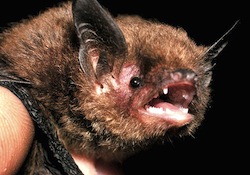The wind energy industry has joined forces with the U.S. Fish and Wildlife Service (Service) to develop a wind energy habitat conservation plan for the Midwest Region. Harm to animals, especially birds, has been a concern of people opposed to wind energy. Today, the group that includes the American Wind Energy Association (AWEA), has signed an agreement to develop a plan that will outline measures to conserve threatened and endangered species that may be affected by wind farm developments. In particular, the plan calls for conservation of Indiana bats as well as other protected species in eight states including Indiana, Ohio, Missouri, Iowa, Illinois, Minnesota, Wisconsin, and Michigan.
 “I believe this positive step will help the Service proceed on a scientifically sound basis to pursue the conservation of endangered species and facilitate the development of a renewable energy source at the same time,” said Tom Melius, the Service’s Midwest Regional Director.
“I believe this positive step will help the Service proceed on a scientifically sound basis to pursue the conservation of endangered species and facilitate the development of a renewable energy source at the same time,” said Tom Melius, the Service’s Midwest Regional Director.
John Anderson, AWEA’s Director of Siting Policy said, ”It is the industry’s expectation that development of the regional HCP will streamline the permitting process, allowing effective conservation of wildlife and easing the Service’s administrative burden, while also allowing for more wind energy to be deployed nationally. This is a shining example of how industry, the Service, states and other stakeholders can work collaboratively to develop an overall conservation strategy that is in the best interest of the affected species.”
Under the HCP, wind developers will acquire an Incidental Take Permit (“Take” in this instance means harming, harassing or killing endangered or threatened species), which will exempt otherwise lawful activities (i.e., construction and operation of a wind energy facility) from the prohibition of take under the Endangered Species Act. The Service has awarded states in the Service’s Midwest Region an Endangered Species Act grant of $3,362,364 to develop a broadly constructed HCP designed to address the potential impacts of wind energy with the wind industry’s commitment to provide 10 percent of matching funds.
The Conservation Fund, an environmental nonprofit, will lead the strategic conservation work accompanying the HCP.

